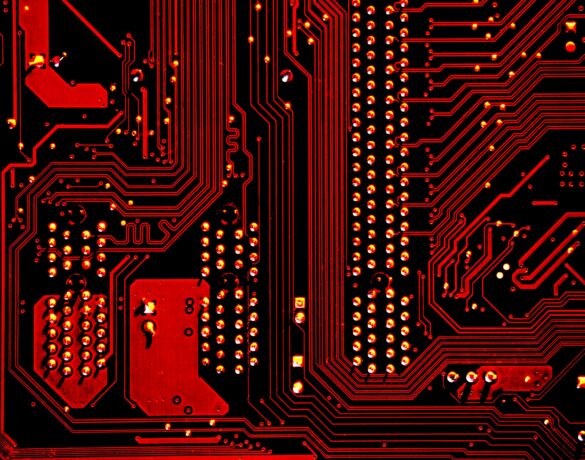Servers are an essential part of the office IT infrastructure. For any company ranging from SMBs to enterprises, a server is a non-negotiable asset of the network ecosystem. The term server not only refers to hardware but could also mean software or functionalities that combine both. Since there are a lot of choices when it comes to buying servers of your own, the decision should involve what function you are looking to solve with a server.
Making The Move; Is The Answer In The Cloud?
The first question people ask about servers is if they need to allocate space in the office for a piece of equipment. This might be a challenge for businesses that are constrained by space or do not have financial freedom. The alternative is to host a server on the cloud. This works for smaller companies that might not have the best IT infrastructure.
The caveat with cloud servers is that there are limits to what you can do with them. Also, their recurring costs grow as the number of people in your team increases. While this is a great option for companies that are starting out, it can be less optimal in the long run. Eventually, you’ll need to opt for a physical server in your office. You can either do away with the cloud server or go for a hybrid approach, whichever suits your team the best.
Should They Buy Or Build Servers?
Both building and buying servers have their pros and cons. When you buy a server, you get the benefits of bundled software, warranty, and support from a manufacturer. But when you build your server, you can customize it to fit your application.
This provides you with a more flexible solution more suited to your needs rather than an off-the-shelf option. Also, the notion that pre-built servers come assembled might be slightly off-base. Vendors offer two choices – built-to-order or configuration-to-order servers. Configuration-to-order options need to be assembled by the vendor before shipping them based on user requirements. Hard drives, memory, and optical drives need to be physically installed on them.
Does server hardware determine function?
While it might seem the obvious answer is yes to the question, in reality, it’s not so simple. Servers can be adapted to perform several different functions in an IT ecosystem. But when you consider a level of specialization, specific hardware configurations are better at some tasks than others.
Servers have innate differences when compared to other computing solutions. They are built to be able to sustain all day and all week operations. They usually have provisions for backup and hot-swappable components that can minimize or prevent downtimes.
How To Pick The Right Server For The Job?
As we’ve touched on before, a server can perform a multitude of tasks. Businesses invest in servers to focus on more specific tasks rather than a generalized portfolio. It all boils down to what you want to do with the server as a business owner.
Here are a few server functions that can help you find out what server you should choose.
Network Attached Storage (NAS) is specifically used as a data storage server. It enables sharing files over a local network, more popularly known as private cloud storage. Focus on – secondary memory options, mainly hot-swappable drive bays and RAID.
Domain authentication controls security and access levels, stores user credentials on a single server used for managing Active Directory (AD). Focus on – servers capable of virtualization with a 64-bit processor and at least 4 GB of RAM.
Database Services enable storage and retrieval of different types of data efficiently. These are usually run on a single or several dedicated servers. Focus on – hard drive with quick write and read speeds to minimize delays between queries.
Running an Application server can help users access shared software all in one place. It can improve performance and is easily updated with reduced TCO. Focus on – enterprise-grade storage options like SAS hard drives and ECC RAM.
Website hosting can be done with a web server. It usually works with a database layer which is usually handled by the same server as well. This can either be logically split into the same server or two or more servers networked together. Focus on – 24/7 operation, reduced downtimes, redundant server components.
Providing access to shared peripherals can be done as well. It only requires a basic server setup. Focus on – low power options; not much computing power is required.
Form Factor To Fit Your Physical Space
The physical dimensions a server occupies are critical to the selection of the hardware. There are basically three types of server form factors.
Tower
Tower servers resemble a desktop and are how most smaller companies begin their server journey. They have plenty of power and do not require additional mounting options to set up. These are fine to start with but when you add more, you might need to look at other options that save space.
Rackmount
Servers that have a ‘rack’ form factor and need to be installed on a rack chassis. These can be stacked vertically on a chassis and are more space-efficient than tower servers for the same computing potential.
Blade
These types of servers are what is currently used in specialized scenarios for most companies. Blade servers offer maximum performance in ultra-streamlined packaging. The catch is that you also need specialized cooling systems because the blade chassis uses only passive cooling. Meaning, it has no active cooling locally.
Server’s Operating System
A server OS is specifically designed to handle the increased computing power and ensure that clients are able to access it effectively. It is more sophisticated than what we use on our personal computers and can handle a much higher number of network connections. There are several types of server OS available today, ranging from Windows Server, CentOS, Red Hat Enterprise Linux.
A Sustainable Alternative
Choosing a server is something that you need to consider carefully, and you need to balance several factors before you make up your mind, including costs, performance, and viability. We hope this article has shed light and added clarity about what type of server you should opt for.
At Aliter, we offer several options to upgrade or replace your IT infrastructure. Choose from our range of refurbished servers and components, which are a viable alternative to buying new.
Another option would be our robust IT Asset Management solutions which can help you out without worrying about overheads like capital, office space, or turnarounds.
Apart from improving your bottom line, they also significantly reduce your company’s carbon footprint, which all businesses are trying to improve moving forward. All these make good points about preferring Aliter equipment over buying new from OEMs.





